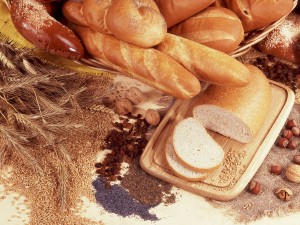Bread and Rolls: Top Culprits For High Salt Intake
Feb 8th, 2012
 Too much salt in your diet? Blame dinner rolls and bread slices for high salt intake.
Too much salt in your diet? Blame dinner rolls and bread slices for high salt intake.
According to the Centers for Disease Control and Prevention (CDC), nine out of ten American adults consume too much salt and the usual suspects (potato chips and fries) aren’t to blame.
Ten types of food make up 44% of the total salt consumed, CDC said. Unexpectedly, bread and rolls are at the top of the list. Bread may not contain as much salt in a single serving compared to other food types, but when consumed several times a day can increase daily salt intake. A single slice of white bread can have as much as 230 mg of salt, the CDC pointed out.
Others on the list are cured meat and cold cuts, pizza, poultry, soups, sandwiches, cheese, pasta, dishes, meat dishes, and snacks like potato chips, pretzels, and popcorn.
A high salt diet can elevate blood pressure, leading to cardiac disease and stroke, the CDC said.
An average American consumes about 3,200 mg of salt each day, which excludes the extra salt added at the table each meal. This is way above the 2,300 mg recommended daily allowance, according to the CDC. A teaspoon of salt, equivalent to 5,000 mg, holds about 2,300 mg of sodium. For sixty percent of Americans, who are over 51 or have conditions like diabetes, high blood pressure, and chronic kidney disease the recommended daily salt limit is 1,500 mg.
The agency reported that even foods that seem healthy like cottage cheese may also contain too much salt. Raw foods like chicken and pork are also often injected with salt.
The CDC advises Americans to eat more fruits and vegetables, select the products with the lowest salt content by carefully reading the label, and limit the consumption of processed foods high in sodium.
“Heart disease and stroke are the leading causes of death in the U.S. These diseases depend largely on the prevalence of high blood pressure,” according to CDC Director Dr. Thomas Frieden.
“Excessive sodium elevates blood pressure, a major risk factor for heart disease and stroke,” Frieden said. “These diseases claim more than 800,000 American lives every year and costs about $273 billion in health care.”
“Most American adults eat or drink twice the recommended sodium allowance,” Frieden said. “Common grocery store and restaurant items contribute the most to the extra sodium Americans consume.”
The study showed that about 65 percent of the salt Americans consume comes from store products, about 25 percent comes from restaurants, and the rest are from other sources like salt shakers and vending machines.
Frieden has recommended restaurants and other food producers to reduce the amount of salt in their food items. “Cutting the salt content of the top ten sodium sources by 25% can potentially save 28,000 lives every year,” he added.
Incorporating these small changes alongside preventive measures offered by your health insurance coverage can make a significant impact on reducing the health risks linked to excessive sodium.
Related posts from our blog:
No related posts.
Tags: health news | High salt intake